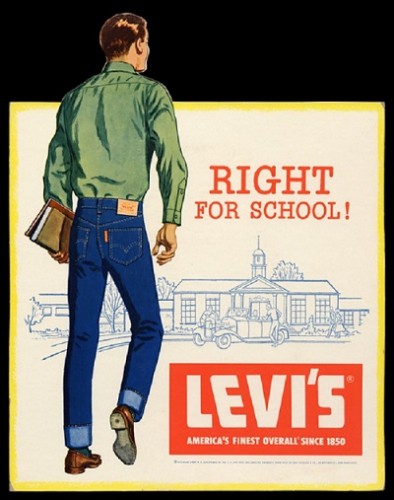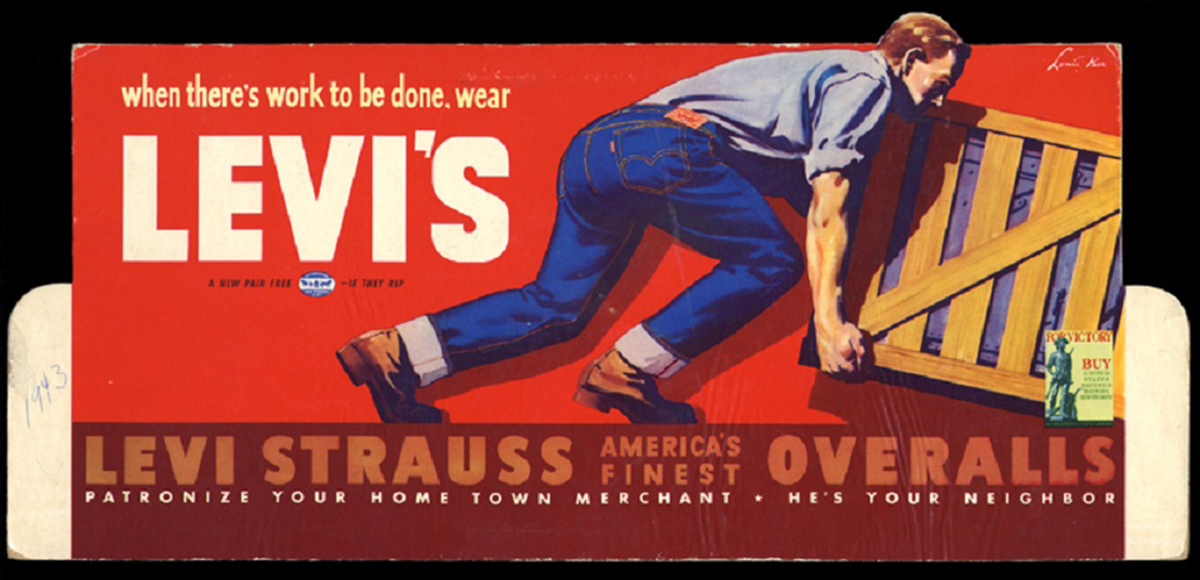Open up any fashion magazine, or watch people on the street in places like Los Angeles, San Francisco and New York, and you will see a blue jean phenomenon: the turned-up cuff. It’s a look that’s very now (and actually has been “now” for awhile), and yet has roots deep in the past.
 Levi Strauss & Co. created the first blue jeans in 1873, and they were made of denim woven at the Amoskeag Manufacturing Company in Manchester, New Hampshire. Back in the day there was no such thing as preshrunk fabrics, so the all-cotton denim was what we today call Shrink-to-Fit™. We all know what happens to cotton in water: it shrinks, and doesn’t go back to its original size.
Levi Strauss & Co. created the first blue jeans in 1873, and they were made of denim woven at the Amoskeag Manufacturing Company in Manchester, New Hampshire. Back in the day there was no such thing as preshrunk fabrics, so the all-cotton denim was what we today call Shrink-to-Fit™. We all know what happens to cotton in water: it shrinks, and doesn’t go back to its original size.
Early wearers of the 501® jeans knew that this would happen with their jeans, and those guys knew that they had to buy their jeans an inch bigger in the waist, and about three inches longer in the leg. Eventually, the denim would shrink (well, if they washed them, which didn’t always happen). But until then, they had to turn up the leg opening, and they had no idea what a fashion statement this look would be many decades later.
The cuff was functional in another way, too. Cowboys who spent hours and hours in the saddle found the cuffs handy as storage spaces: they could hold a tobacco pouch or pack of cigarettes, for example. It was a lot easier to reach into your cuff than your saddle bag, and you didn’t have to get off the horse to do it.
 High school boys would use the cuffs like extra pockets, too. Candy, coins and even pencils found their way into the turn-ups on many campuses.
High school boys would use the cuffs like extra pockets, too. Candy, coins and even pencils found their way into the turn-ups on many campuses.
When pre-shrunk jeans came into vogue in the 1960s the cuff disappeared, due also to the skinnier fits of the decade. The only place you could see this look was in movies, until a craze for vintage fashion exploded from Los Angeles to New York in the 1990s. The Levi’s Vintage Clothing line of 1996 helped spur this movement, and helped make the cuff cool again.
It was also a very authentic look. Those early Levi’s® jeans showed the denim’s selvage (“self-edge”) when the leg opening was turned up. This was the signature look of the classic denim wearer, and is still the much imitated and admired look of today.







